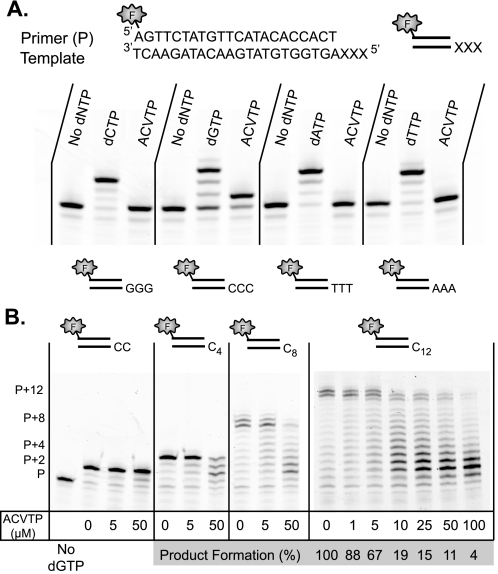FIGURE 2.
ACVTP is a substrate and chain terminator of RT and competes with dGTP for incorporation. A, HIV RT can incorporate ACVTP. The primer (1 μm) was annealed to indicated template (2 μm) and incubated with 100 nm RT alone, RT and 100 μm cognate dNTP, or RT and 100 μm ACVTP for 5 min. For each primer/template pair, RT achieves extension with the cognate dNTP, yielding a +3 band representing consecutive nucleotide additions. Acyclovir is only incorporated opposite a cytosine-containing template and generates a +1 band suggesting single addition. B, ACVTP competes with dGTP for incorporation onto poly-C templates. The template names, Cn, denote the number of cytosine nucleotides repeated at the 5′-end of the template. The control lane lacks dGTP. For all other lanes, 100 nm indicated primer/template was incubated with 100 nm RT, 5 μm dGTP, and the indicated concentrations of ACVTP for 5 min at 37 °C. For reactions with C12-containing template, full-length product was taken as primer extended from 11 to 13 bases with dGTP, as alternate length results from the untemplated addition or sliding of the template relative to primer. Signal intensity was quantified for the full-length product relative to the total signal. The percentage of product formation was determined relative to the full-length product in the absence of ACVTP. With increasing ACVTP concentrations, product formation decreases and truncated products accumulate. XXX represents G-, C-, T-, or A- containing templates represented in panel A, respectively. P is primer.

